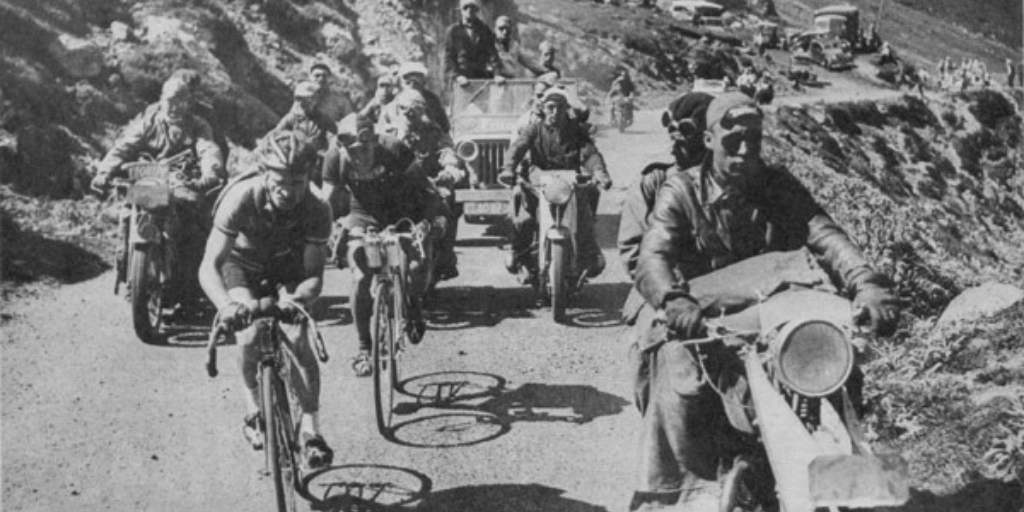Tour de France winner Jean Robic was born on the 10th of June in 1921 in Vouziers, France.
His professional career started in the middle of the 2nd World War in 1943.
In 1944 he finished Paris-Roubaix with a fractured skull. After this event, he started wearing a leather helmet which became later something like his trademark. Journalists gave him several nicknames during his almost two-decade-long career, one of them was “Tête de cuir” ( a. k. a “leather-head”)
Due to his shortness and skinny body type (160 cm /60 kg) he was underestimated in his early active years, especially before the Tour de France in 1947. He was selected only for a regional team, not in the main French team. Nevertheless, he was convinced, he should have been selected into the best squad. Robic married just before the Tour de France and allegedly he promised to take home the yellow jersey as a wedding gift.
If you like PelotonTales,
you can support it with a small donation
Thank you for your support
1947 was the first year after the 2nd World War Tour de France was held. The absolute favourite of the race was René Vietto, who dominated the race. However, on the 19th stage, the longest individual time trial ever (139 km), Pierro Brambilla took over the lead in the general classification. He wore the yellow on the very last day too when Robic attacked and claimed the overall victory of the race.
In the next few years, Robic delivered a solid performance at the Tour de France, he finished 4th in 1949 and 5th in 1952, when he was the only one rider who partially could ride alongside with Fausto Coppi up to Alpe d’Huez.
Robic had some success also in cyclo-cross, he was French National Champion (1945) and World Champion (1950)
He had a serious injury at the Tour de France in 1953 and never was the same. His professional career ended in 1961. After his retirement, he, as many other cycling champions before and after, struggled to find his place in ordinary life.
His professional teams
1943–1945 Génial Lucifer
1946–1949 Génial Lucifer-Hutchinson
1950 Thomann-Riva Sport
1951 Automoto-Dunlop
1952–1954 Terrot-Hutchinson
1955 Gitane-Hutchinson
1956–1957 Essor-Leroux
1958–1959 Margnat-Coupry
1960 Rochet-Margnat
1961 Margnat-Rochet-Dunlop
Jean Robic died in a car accident on the 10th of October in 1980, after attending a party celebrating Joop Zoetemelk’s Tour de France victory.
MORE TOUR DE FRANCE IN THE ALPS
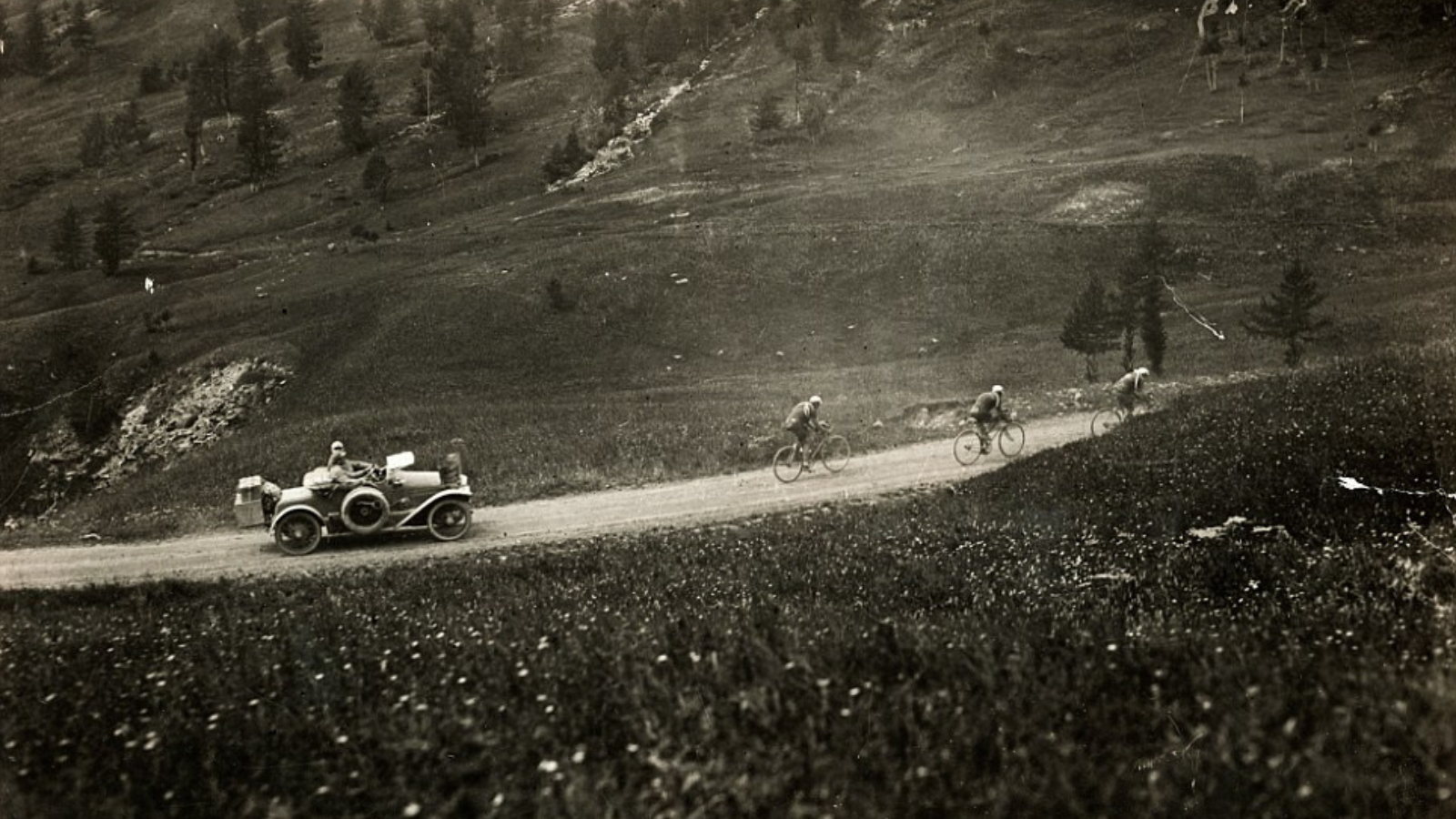
Climbing Col d’Allos at Tour de France 1914 -Vintage cycling image of the day
Tour de France 1914 started on the same day, 28th June, as the Austro-Hungarian Archduke Franz Ferdinand and his wife, Sophie, Duchess of Hohenberg were assassinated in Sarajevo. When the riders lined up in the middle of the nigh for the start of the first stage in Paris, they knew nothing about that this day … Read more
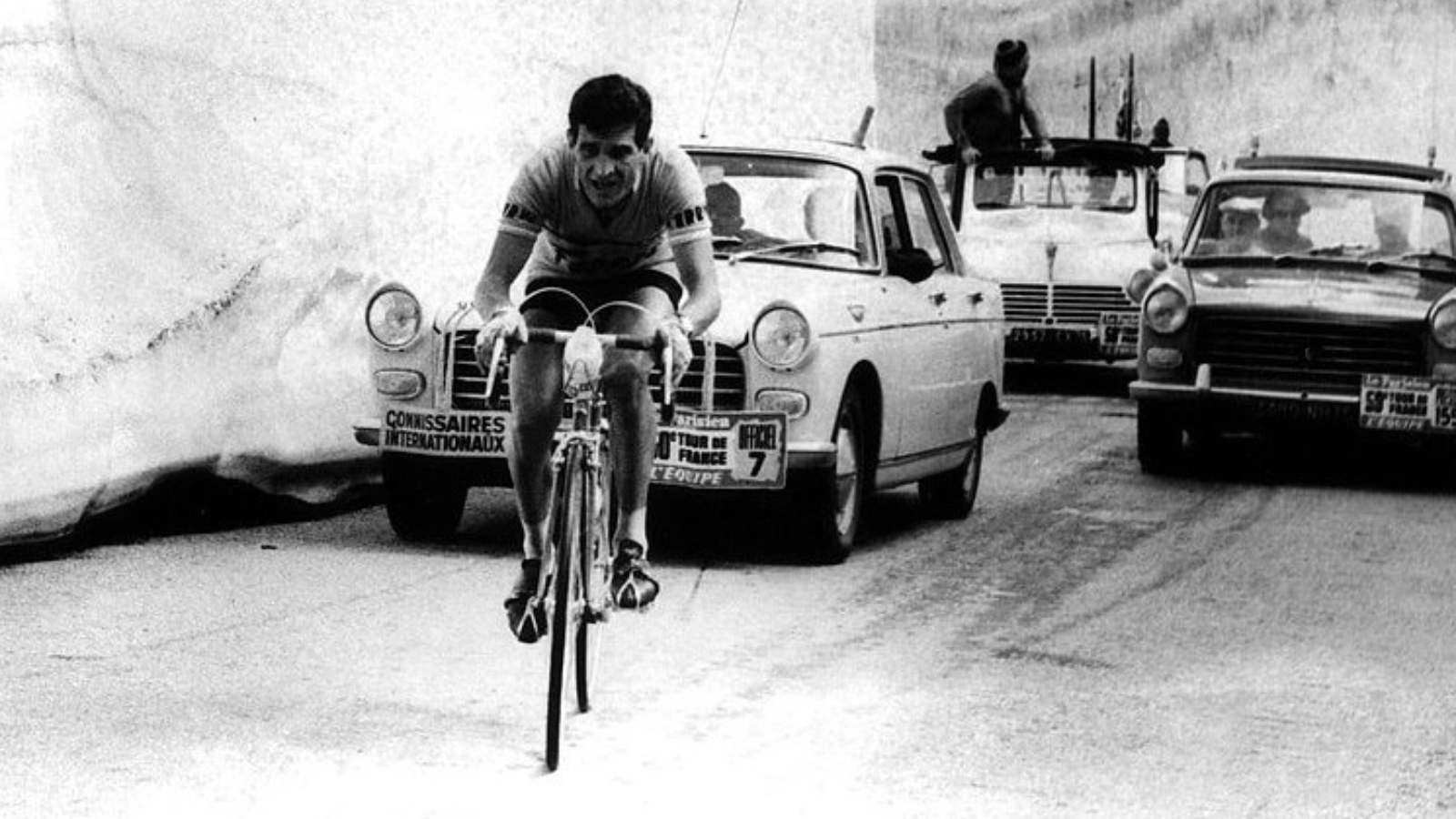
Fernando Manzaneque on the Col d’Iseran (Tour de France 1963)
Snow at the Tour de France? Yes, it happens sometimes, especially, when the race visits such high places like Col d’Iseran in the Alps. In the 16th stage of Tour de France 1963, the peloton visited the Alps. It was a 202 km long stage between Grenoble and Val d’Isere, including Col de la Croix … Read more
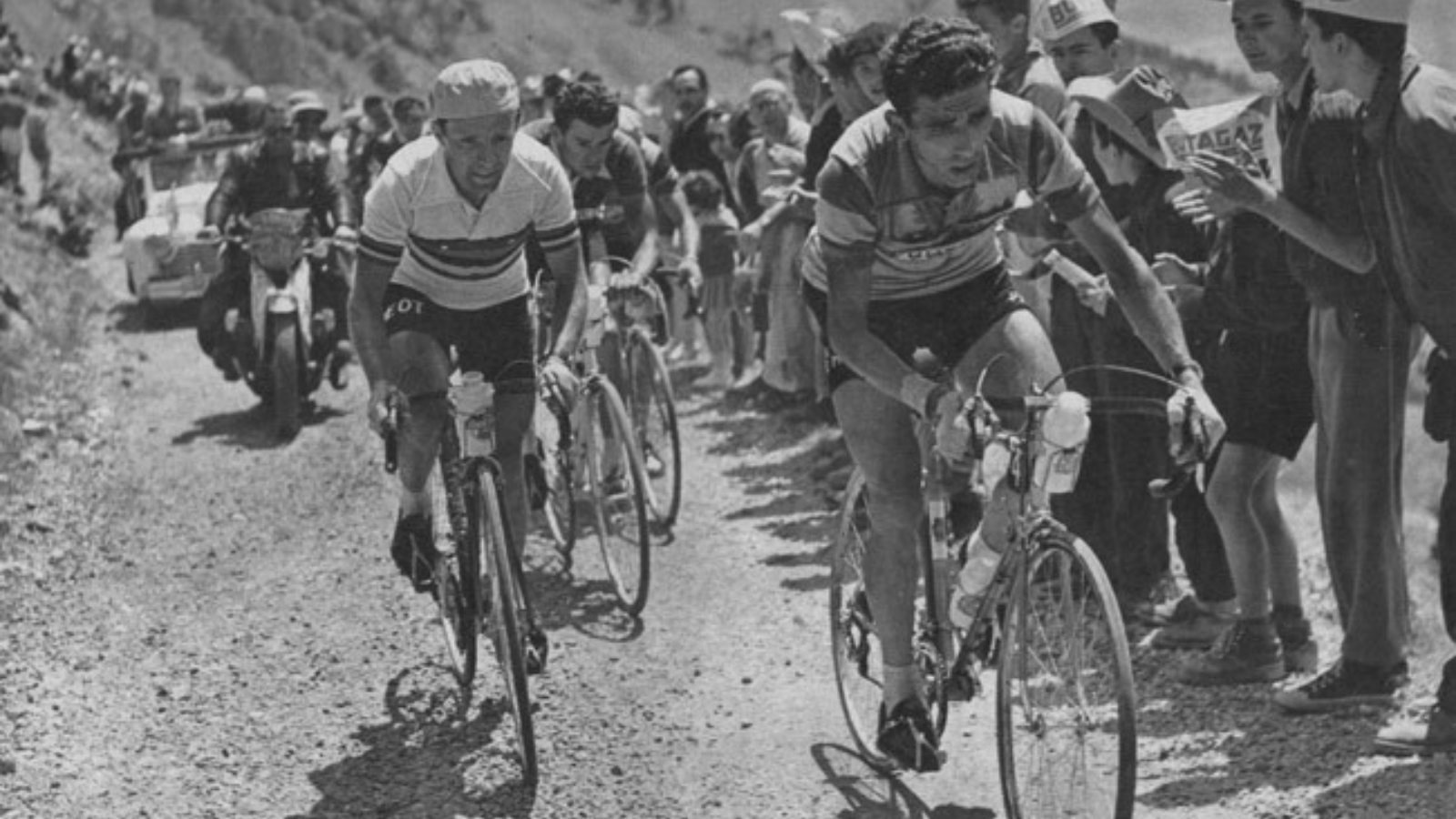
Tour de France visits Turin (Tour de France 1956)
Although the first ever Italian Grand Depart of Tour de France will take place in 2024, the race visited Italy for plenty of times, usually during mountain stages in the Alps. Turin is one of the most visited Italian cities by Tour de France. In 1956, peloton made a trip to the place in 17th … Read more
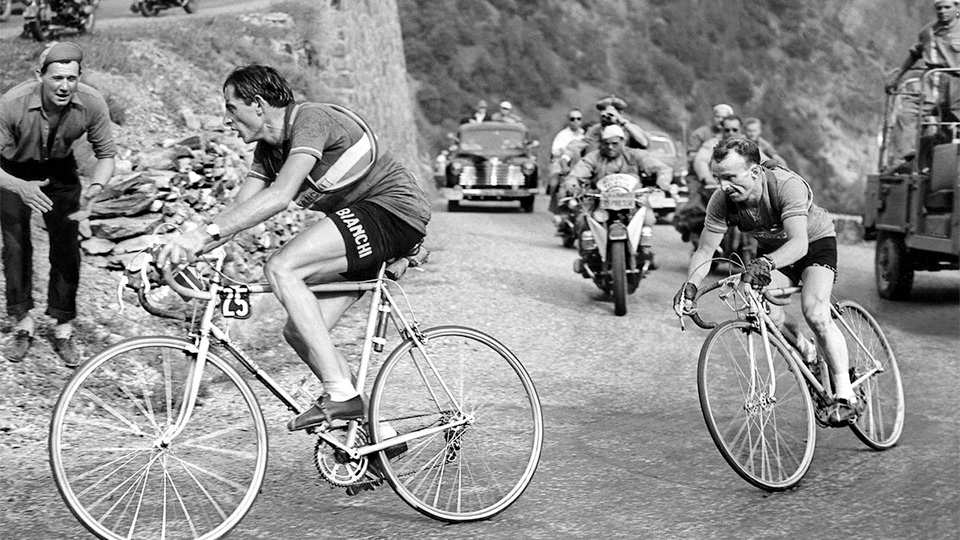
Alpe d’Huez, the instant classic
There is a simple reason, why Alpe d’Huez was introduced to the Tour de France only in 1952, while the race visited the Alps since 1911 frequently: there is only one way up to the top, hence the stage must be finished there. But the concept of a hilltop finish wasn’t born yet. Indeed, the … Read more
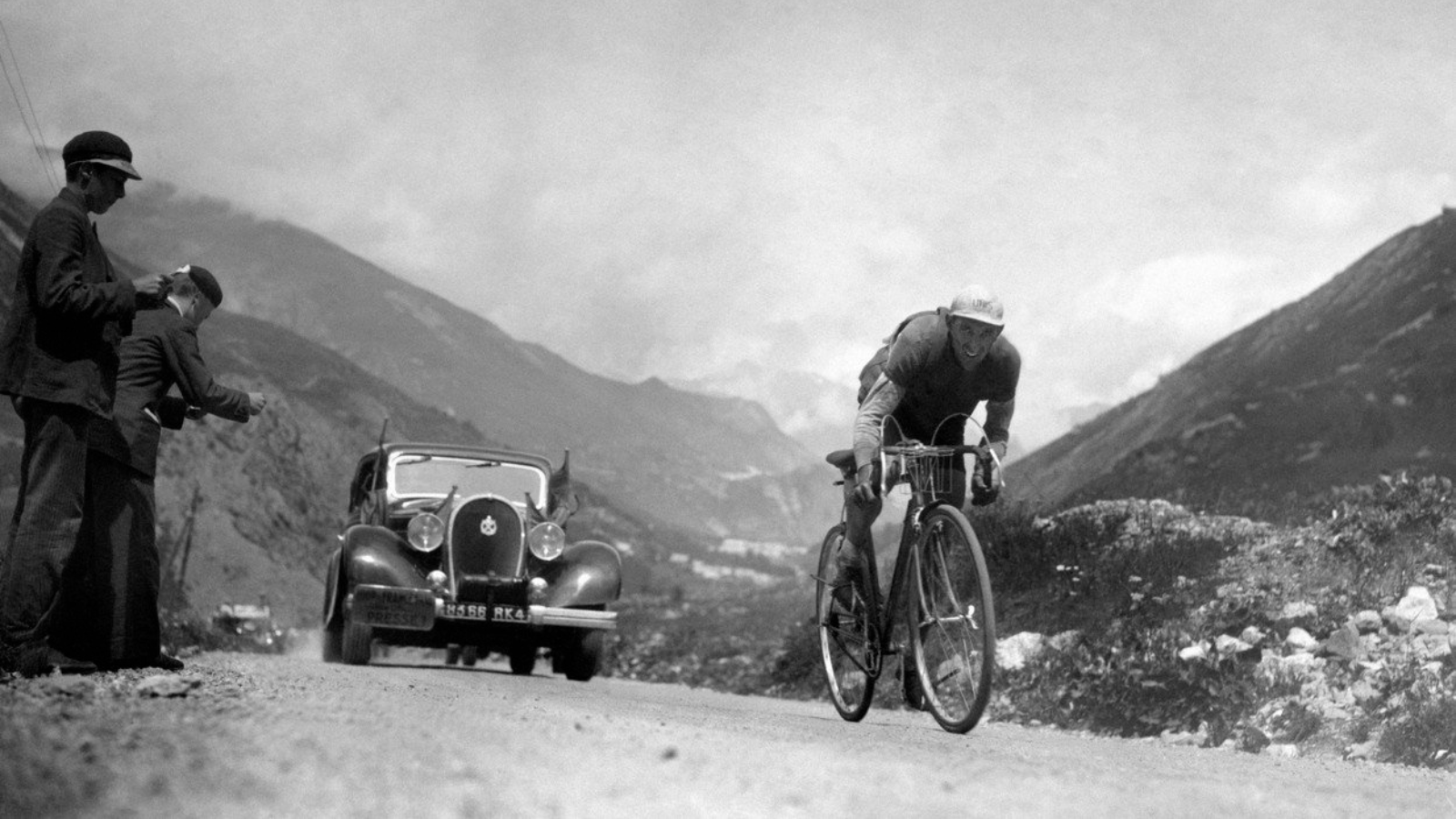
Fédérico Ezquerra on the Galibier (Tour de France 1936)
Col du Galibier was part of the 7th stage alongside with Thélégraphe and Lautaret at the Tour de France in 1936. (Usually, when the peloton climbs Galibier, they climb also Thélégraphe and Lautaret.) The 230 km long stage ended in Grenoble (hilltop finishes were introduced to Tour de France only in 1952), and a whole … Read more
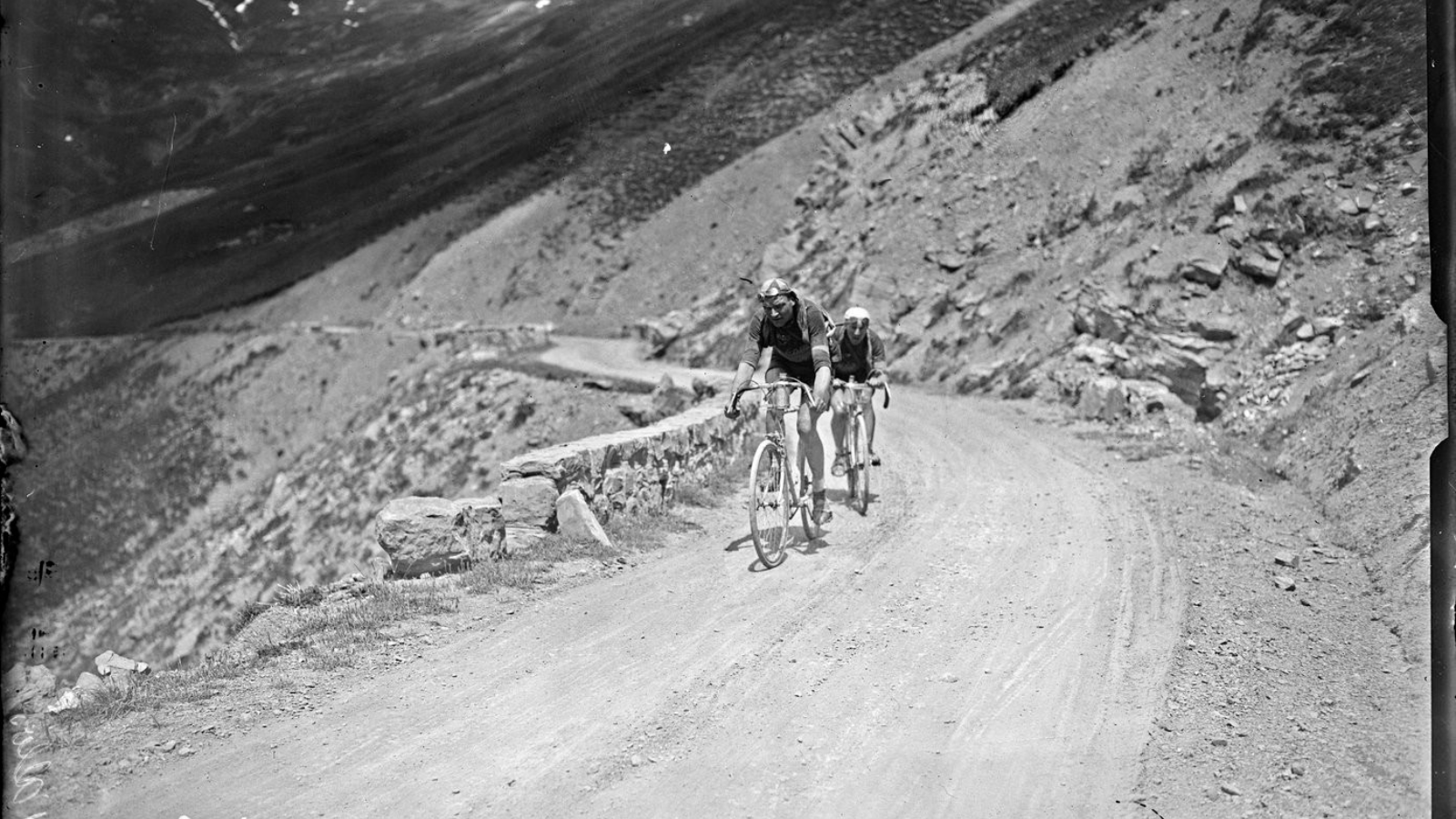
Col d’Allos at Tour de France
Col d’Allos was part of the program of Tour de France since the race visited the Alps for the very first time in 1911. Especially during the 1920s and the 1930s was very popular. In the second half of the 20th century it was used muvh more rarely. 1911: François Faber 1912: Octave Lapize 1913: … Read more
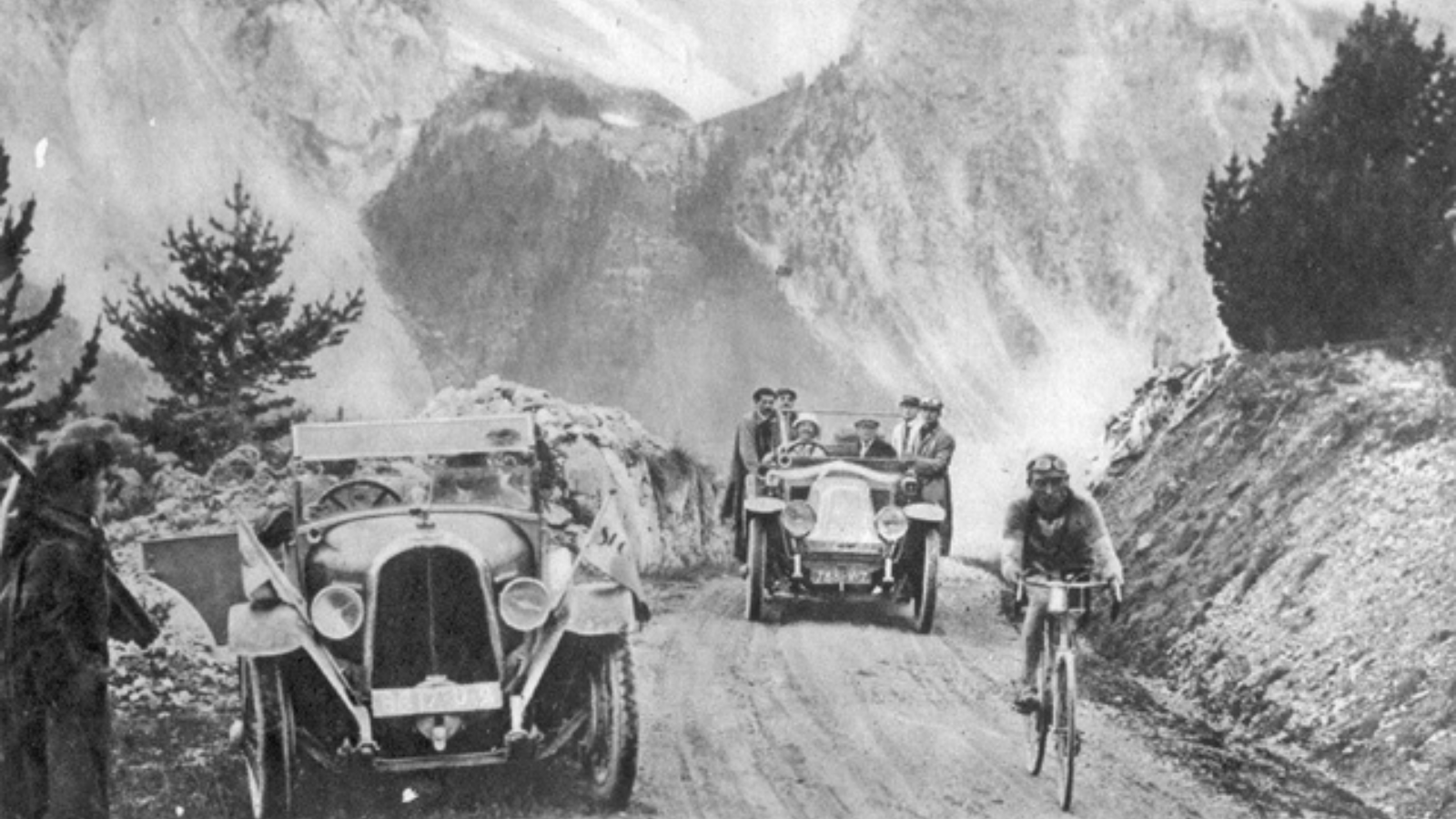
Ottavio Bottecchia on the Izoard (Tour de France 1925)
Col d’Izoard was introduced to Tour de France in 1922. It seems to have been the new favourite of the organizers, they put it in the program also in the next 5 years. (And it is still one of the most used ascent in the history of Tour de France) Ottavio Bottecchia might have been … Read more
MORE TOUR DE FRANCE IN THE 1950S
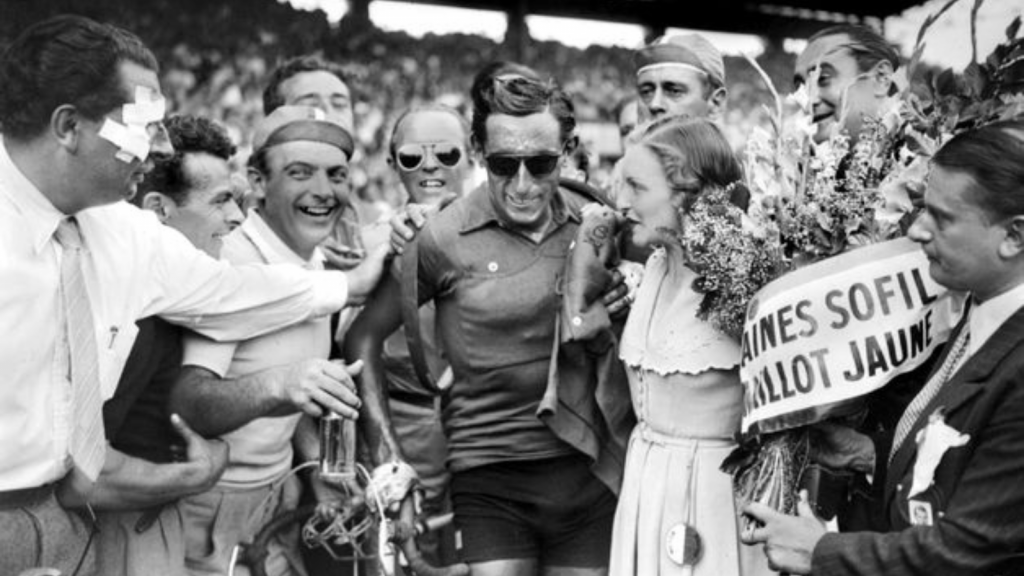
Fausto Coppi and the Tour de France
It might sound unbelievable, but Fausto Coppi, the third Campionissio of the Italian cycling, one of the greatest legends of the sport rode Tour de France only 3 times. From our rather nostalgic point of view it appears as a longer period. But no. It happened only three times between 1949 and 1952. So big … Read more

Tour de France visits Turin (Tour de France 1956)
Although the first ever Italian Grand Depart of Tour de France will take place in 2024, the race visited Italy for plenty of times, usually during mountain stages in the Alps. Turin is one of the most visited Italian cities by Tour de France. In 1956, peloton made a trip to the place in 17th … Read more

Alpe d’Huez, the instant classic
There is a simple reason, why Alpe d’Huez was introduced to the Tour de France only in 1952, while the race visited the Alps since 1911 frequently: there is only one way up to the top, hence the stage must be finished there. But the concept of a hilltop finish wasn’t born yet. Indeed, the … Read more
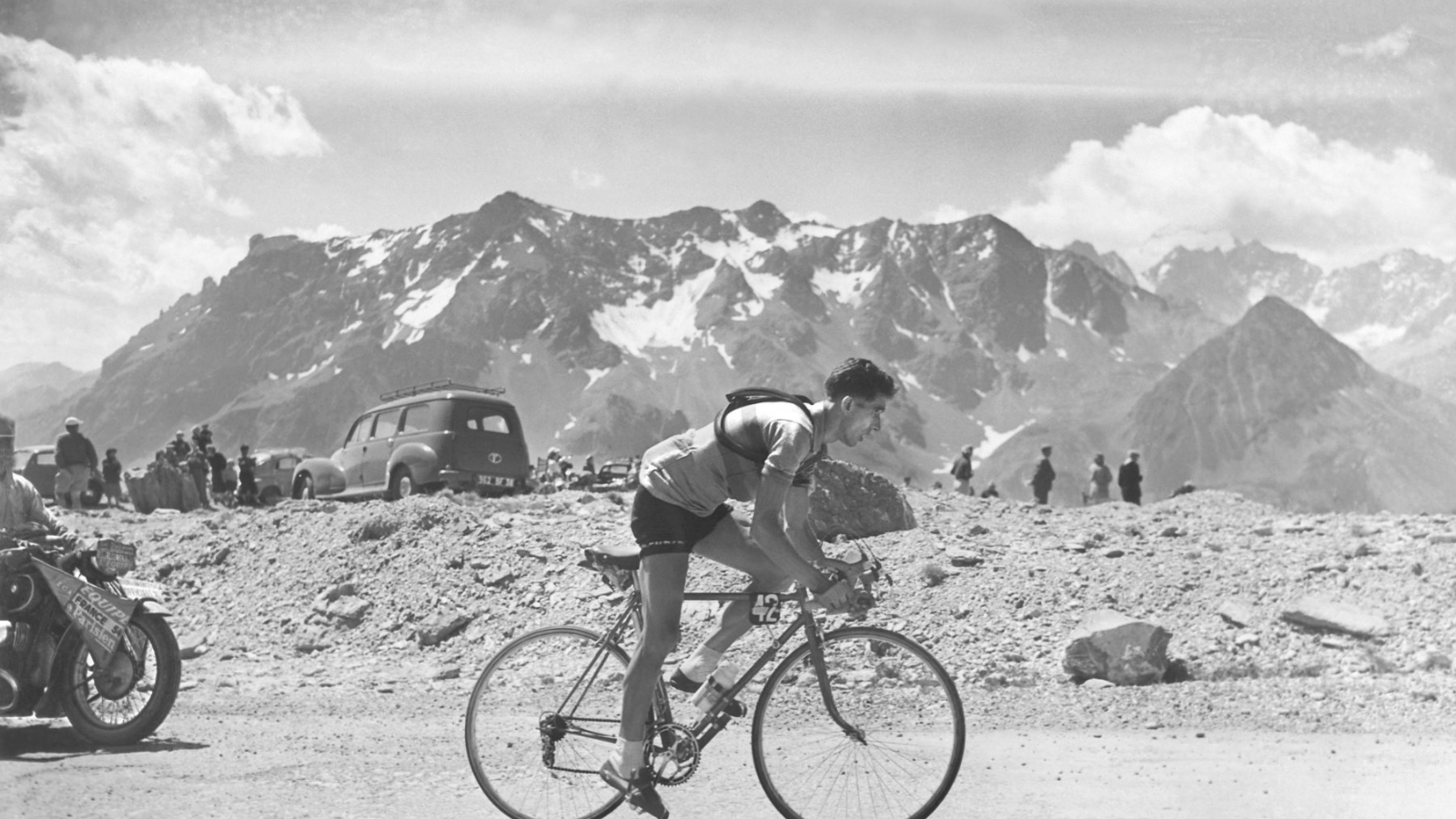
Federico Bahamontes on the Galibier (Tour de France 1954)
Federico Bahamontes rode Tour de France for the very first time in 1954. Of course, the real race for him started in the Pyrenees. On the 12th stage, which included Tourmalet, Aspin and Peyresourde, he arrived at the finish with Jean Malléjac and Gilbert Bauvin, who won the stage with 1 sec ahead of Bahamontes, … Read more
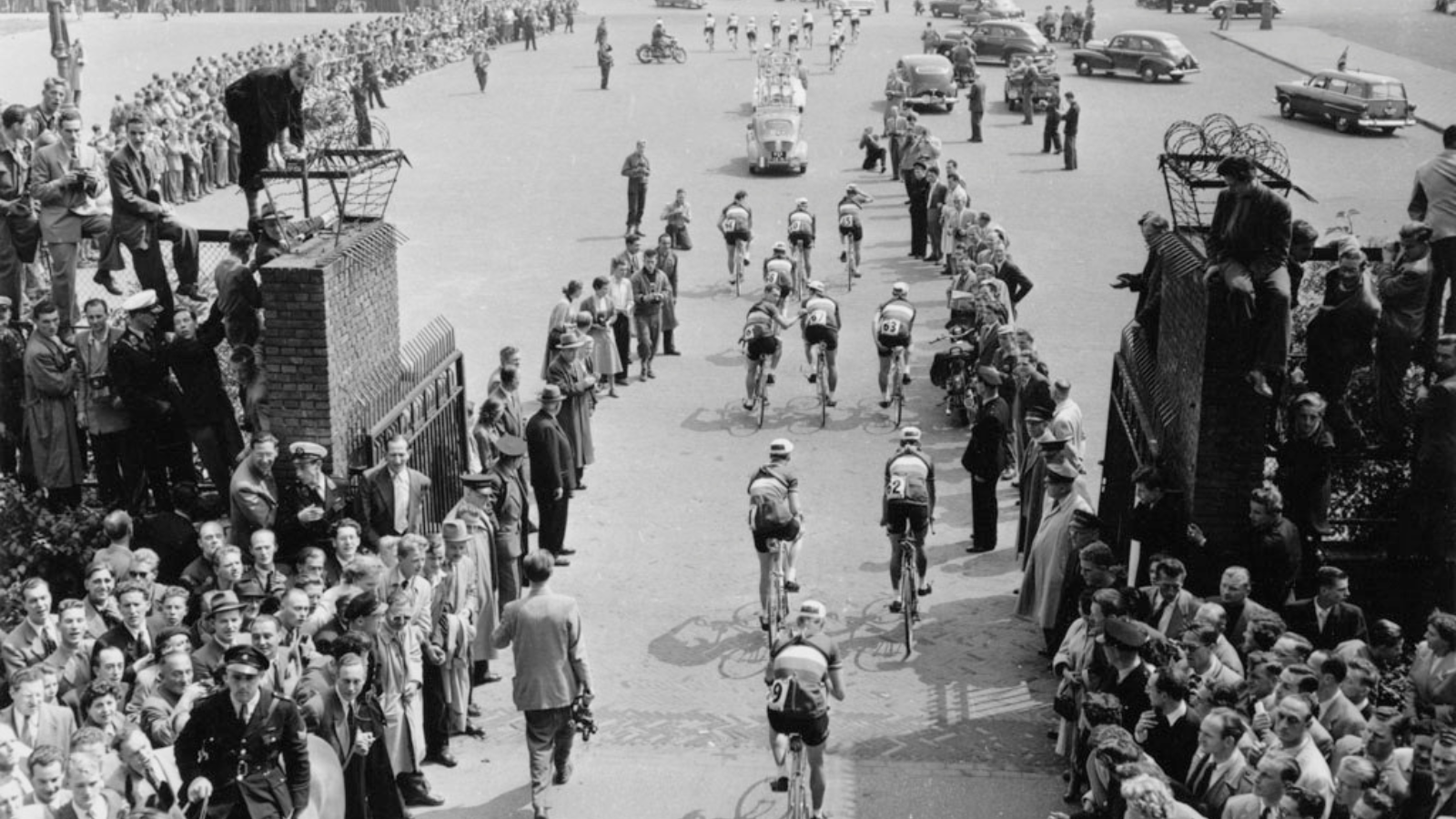
Grand Depart in Amsterdam (Tour de France 1954)
Although Tour de France visited neighbour contries already during the early years of its history frequently, the first international start (grand depart) of the race happened only in 1954. Amsterdam had the privilege to host the start of the event. The 216 km long first stage of Tour de France 1954 between Amsterdam and Brasshaat was … Read more
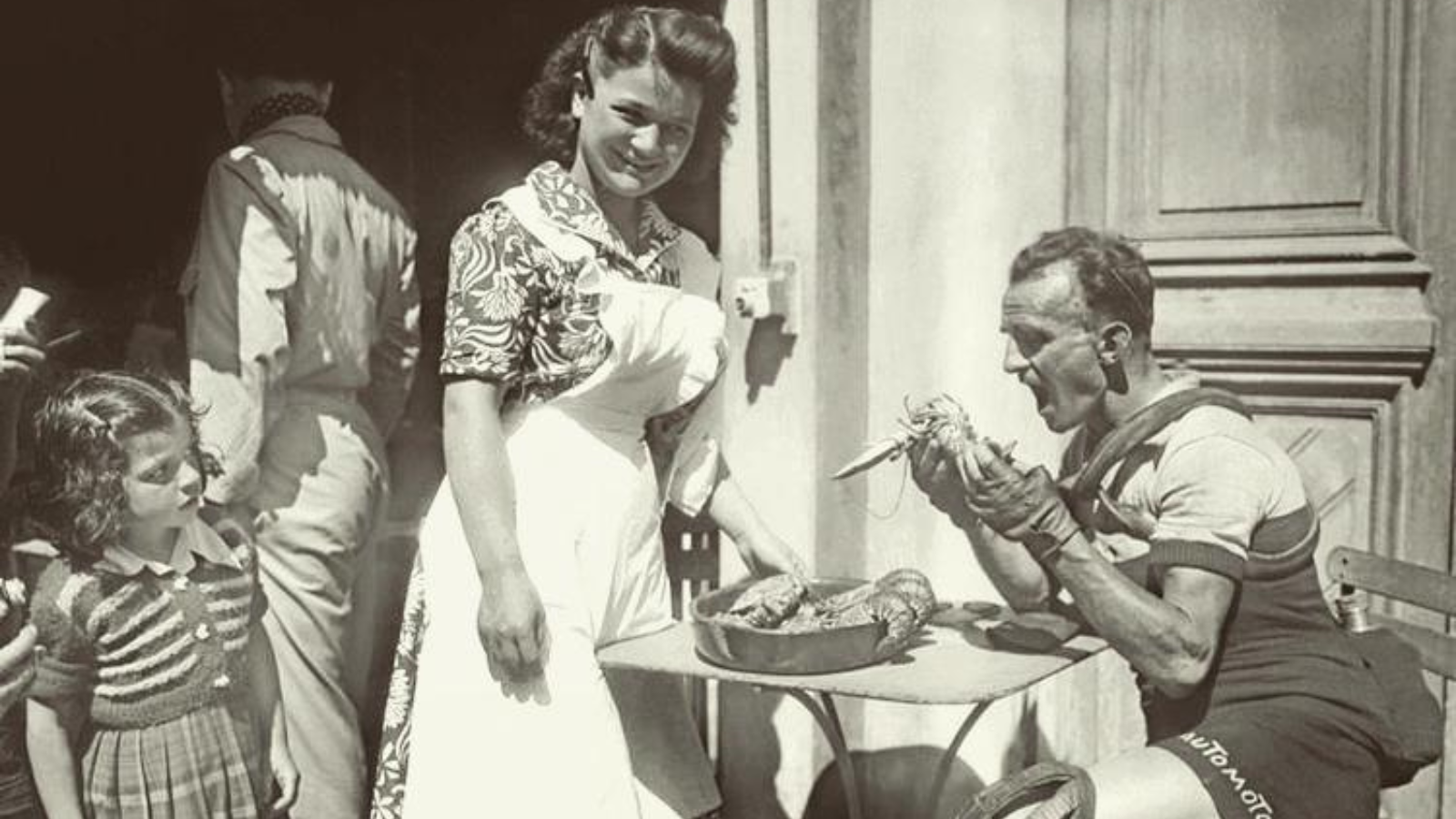
A lunch before the race (Jean Robic, Tour de France 1951)
Jean Robic, winner of Tour de France 1947, was one of the most important cyclists of the post 2nd world war era. Of course, he was racing in the shadow of the giants, Fausto Coppi and Gino Bartali, but after all, he managed to win a Tour de France and also several stages. In many … Read more
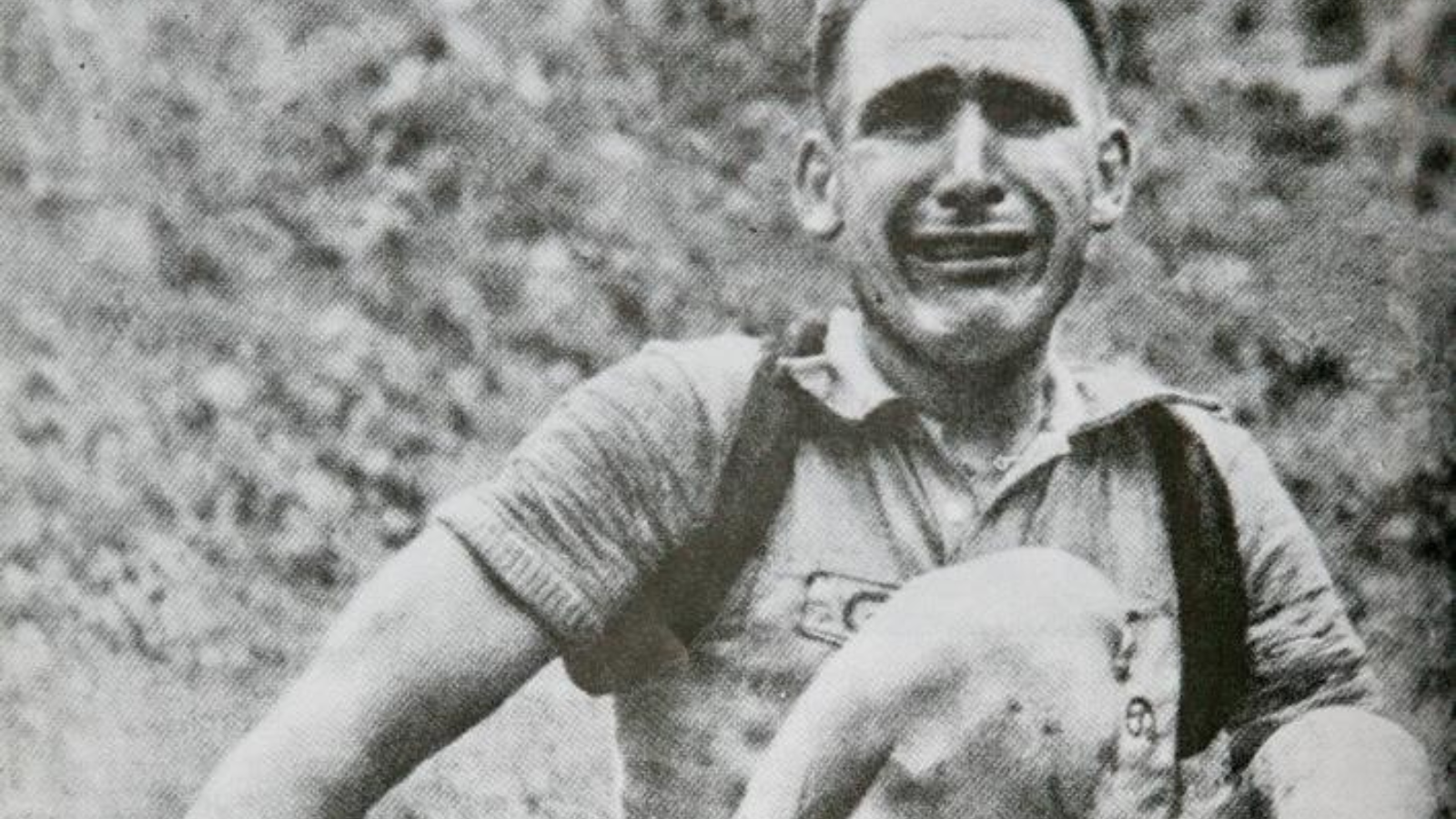
17 July 1951 Wim van Est’s crash on the Aubisque
On the 12th stage of Tour de France 1951 Wim van Est escaped with a small group, won the stage and took the lead in the general classification. He was the first Dutchman to wear the yellow jersey. Next day the peloton arrived in the Pyrenees. The 201 km 13th long stage between Dax and … Read more
